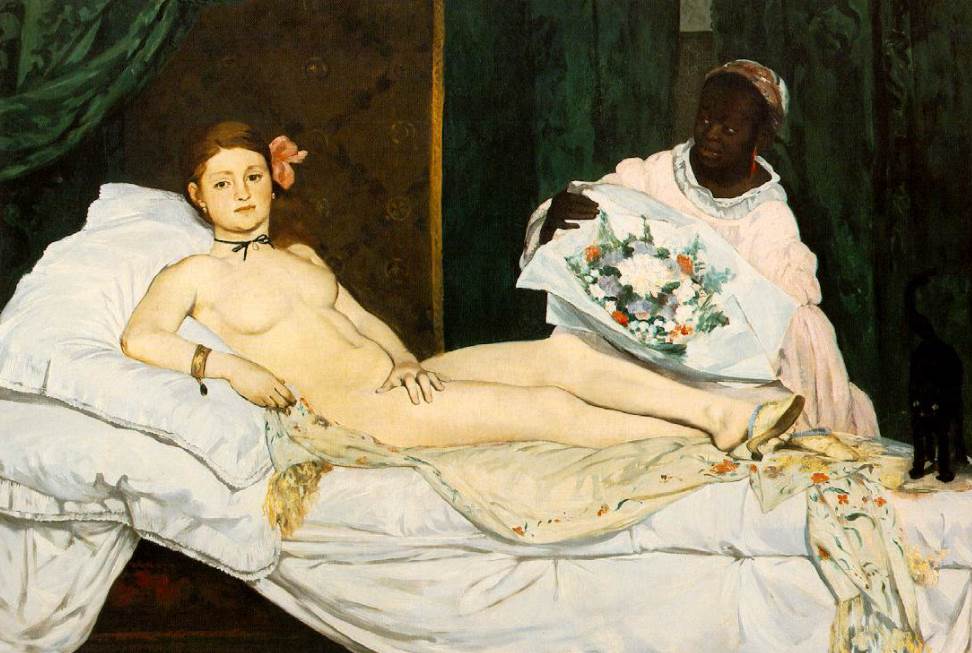Venus was the Roman goddess of love, beauty, desire, sex, and multiple other related things. Because of this, she has been depicted naked ever since ancient times, and this trend was continued during the Renaissance.
Diego Velázquez (1599-1660) only left behind one nude female, mainly because he wasn’t allowed to paint nudity in his paintings by the Spanish moral police of the 17th century.
This makes the Rokeby Venus a unique work in his oeuvre, so let’s take a closer look at some of the most interesting facts about this remarkable Venus painting.
1. It was most probably painted during Velázquez’s trip to Italy
Nudes in the world of art were pretty common in antiquity and experienced a revival during the Renaissance. This was a period in which artists sought to portray things and figures as they were based on the ancient concept of humanism.
Venus was a popular figure to portray naked because she was the ancient Roman goddess of beauty and love. Although nudes were used frequently by Baroque artists as well (think of the voluptuous nudity in many works of Peter Paul Rubens for example), Spanish artists weren’t allowed to paint nudes at all.
Velázquez was the Spanish court painter and was therefore exempt from being policed by members of the Spanish Inquisition, but he did refrain from painting nudes in most of his works.
It’s assumed that this painting was created anywhere between 1647 and 1651. This means it was painted abroad as he visited Italy for the second time between these years.

2. It shows a particular feature known as the “Venus Effect”
The Rokeby Venus goes by several names such as “The Toilet of Venus,” “Venus at her Mirror,” “Venus and Cupid,” or the Spanish name “La Venus del Espejo.”
Multiple of these names refer to the mirror in which Venus is looking in which she is admiring herself. However, this is impossible because we are not directly behind her and we can see her face in the mirror.
This particular type of effect is referred to as “The Venus Effect” and has often been used in the world of art. Some of the most famous artworks implementing the Venus effect are:
- Venus at her Mirror by Peter Paul Rubens (1614-1615)
- Venus with a Mirror by Titian (1555)
- Venus with a Mirror by Paolo Veronese (1585)
- The Toilet of Venus by Simon Vouet (1628)
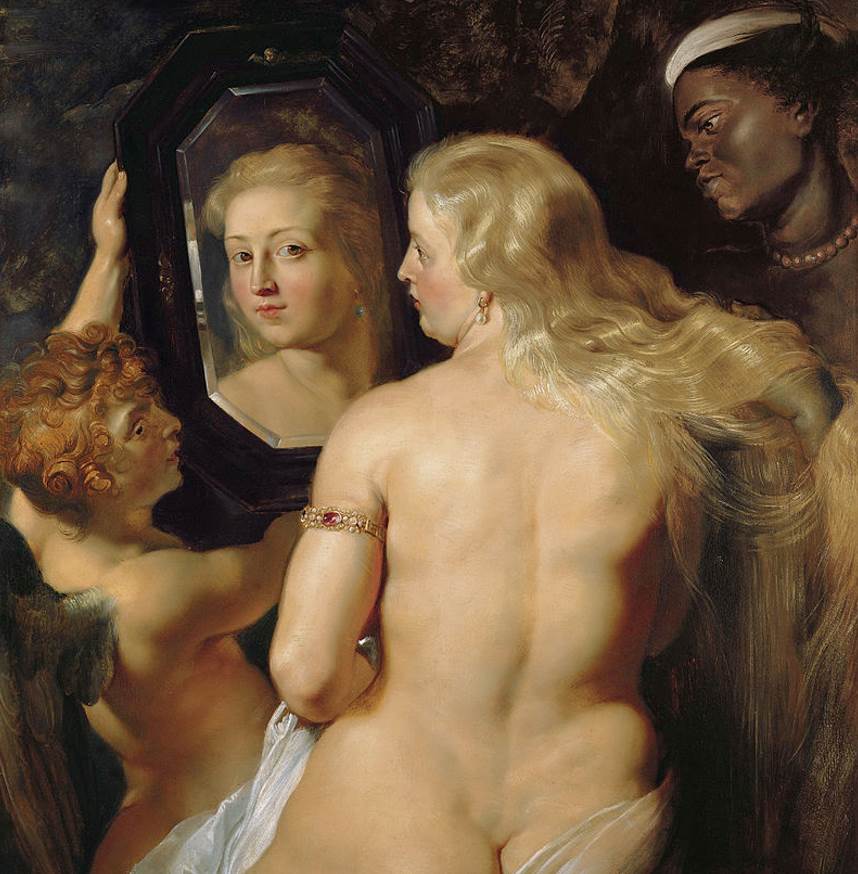
3. Multiple works have been suggested to have been the artist’s inspiration
Diego Velázquez was allowed to travel to Italy to study the works of the most renowned Italian artists. He brought his loyal assistant Juan de la Pareja and they not only admired works of Tintoretto, Veronese, and Titian in Venice but also bought quite a few during their extended trip.
It’s unknown which painting provided the ultimate inspiration for the artist to paint the Rokeby Venus so multiple suggestions have been made. Since he spent quite some time in Venice, it’s fair to assume that he saw the Venus of Urbino (1538) by Titian and the Dresden Venus (1510) by Giorgione.
It’s also possible that the painting was based on ancient sculptures such as “Sleeping Ariadne” (now located in the Pitti Palace in Florence) or the “Borghese Hermaphroditus” (now on display at the Galleria Borghese in Rome).

4. It’s the only surviving nude by Velázquez but he probably painted 3 more
The Rokeby Venus can easily be described as one of the most fascinating paintings in the oeuvre of Diego Veláequez. Not only because it’s the only surviving nude he ever painted, but also because of the context in which depicting nudes was officially discouraged by the Spanish Inquisition at the time.
3 nudes painted by the artist have been lost through history. 2 paintings in the Spanish Royal collection were most probably lost during the great fire of 1734 which destroyed the Royal Alcázar of Madrid. His most famous work, “Las Meninas” (1656), was luckily saved from this fire.
Another painting was held in a private collection and its whereabouts remain unknown today. The 3 paintings were mentioned in 17th-century inventories as “a reclining Venus”, “Venus and Adonis,” and “a Psyche and Cupid.”
5. The name of the work refers to its located during the 19th century
It’s assumed that the painting was mentioned for the first time in the year 1651 when it entered the collection of Gaspar Méndez de Haro, 7th Marquis of Carpio, one of the confidants of King Philip IV of Spain.
The painting then passed on to his descendants until it appeared once again in 1802. This time it was an order to sell the painting by King Charles IV of Spain to his chief minister, a man named Manuel de Godoy.
It was eventually brought to England in 1813 where John Bacon Sawrey Morritt bought it from a local art dealer to hang it in his residence at Rokeby Park, Yorkshire, in Northern England. It’s from this period that the painting got its common name.
Today, it’s part of the collection of the National Gallery in London which bought it through the newly established National Art Collections Fund.
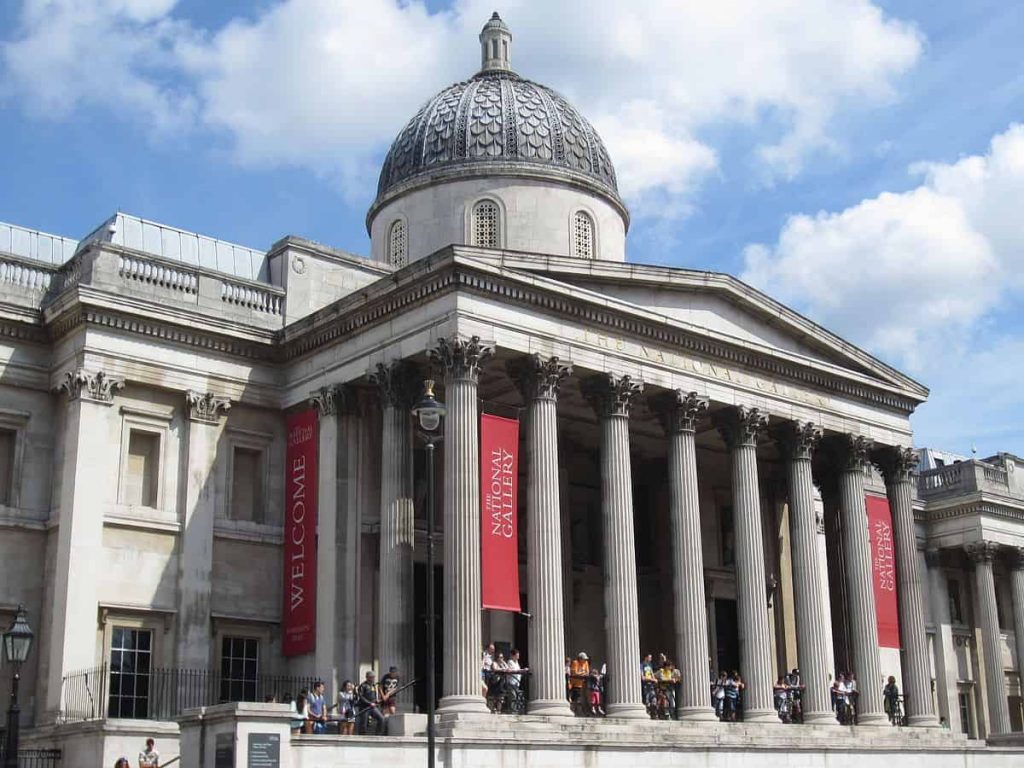
More interesting facts about the Rokeby Venus
6. The painting is about the same size as the works it’s potentially based on such as the Venus of Urbino and the Dresden Venus. It has dimensions of 122 × 177 centimeters (48 × 49.7 inches).
7. The little boy that holds the mirror of Venus is her son, Cupid. He was also a very popular god in classical mythology and is often associated with love and eroticism.
The presence of Cupid is also how we can identify the naked woman as Venus because they were often portrayed together.
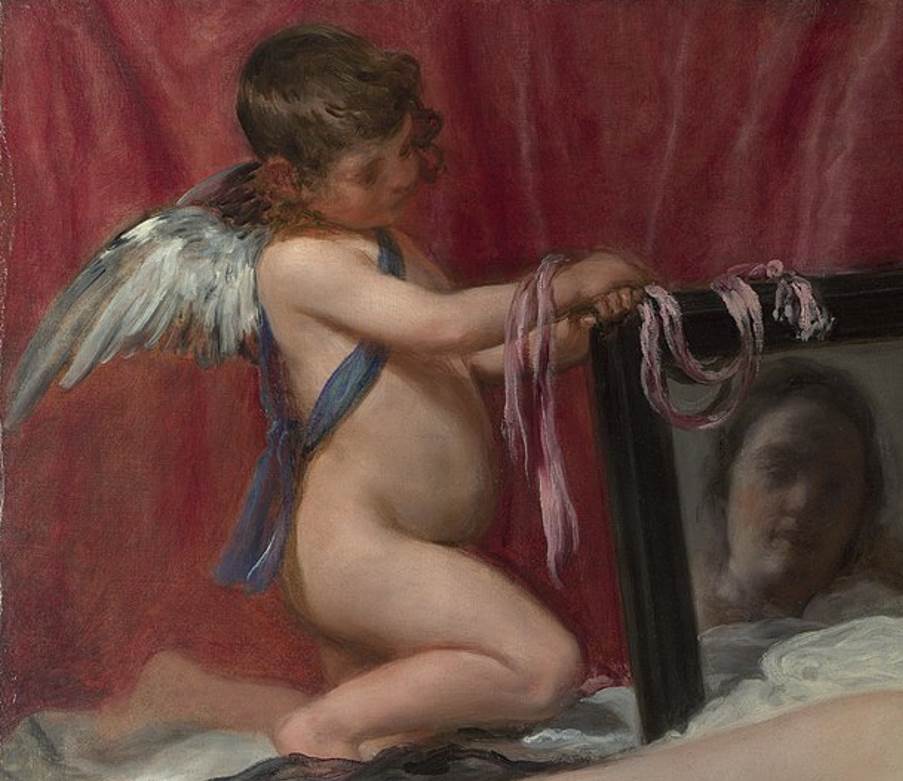
8. The identity of the woman in the painting remains unknown, but art historians assume that the work was painted from real life. This strengthens the theory that Velázquez produced this work when he was staying in Italy.
Although using nude male models was just fine, inviting nude female models into your studio as an artist was frowned upon in 17th-century Spain. To make things worse, finished paintings featuring nude females often ended up confiscated and the artists were either fined or banished from Spain for a year.
9. What’s striking about this sense of morality in Spain during this period is that art collectors often owned paintings created by foreign artists featuring nude females themselves.
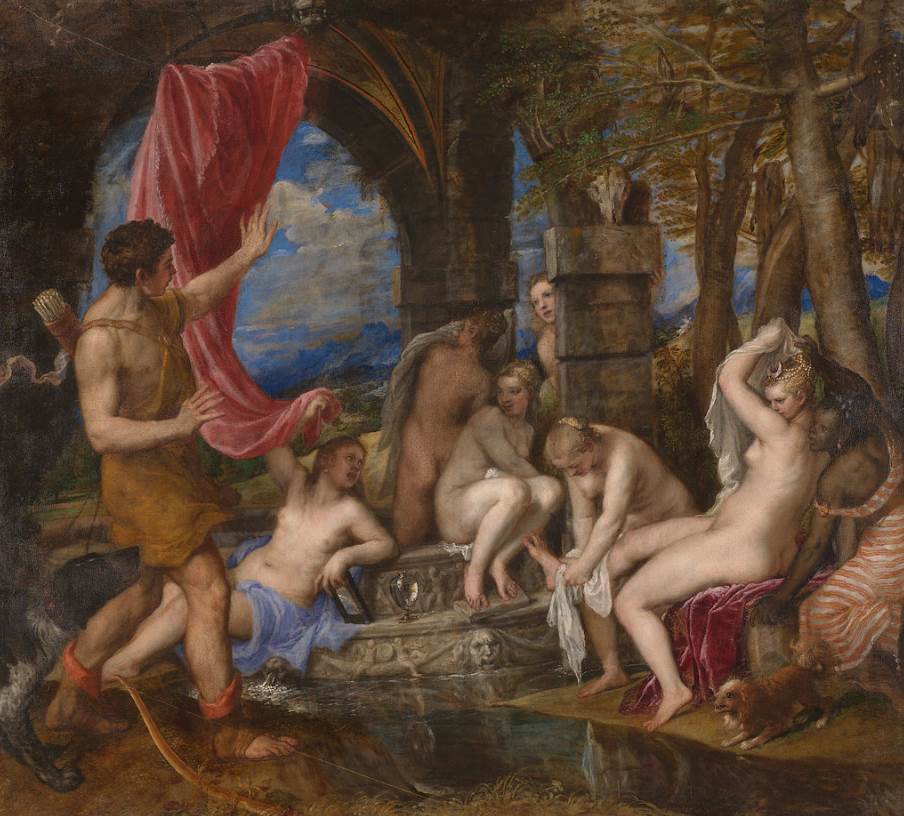
This double standard allowed King Philip IV and other rich art patrons to own nudes that he hung in his private quarters. The king owned a variety of nudes by Titian and Rubens, often depicting mythological scenes.
10. Before the painting was transported to England in the year 1813 it hung together with 2 other paintings in the collection of Manuel de Godoy, one featuring a nude female.
These were “The Nude Maja” and “The Clothed Maja” by Spanish Romantic painter Francisco Goya (1746-1828). The Spanish inquisition was still active at the time and even though Goya was summoned by them, he was able to retina his title as the “Prime Court Painter.”

11. John Morritt bought the Rokeby Venus for just £500 in 1813, the equivalent of over £ 33,000 today, quite a meager sum for such an influential work of art.
One of the most remarkable facts about the Rokeby Venus is that King Edward VII admired the painting so much that he chipped in £8,000 of his funds to buy the painting less than a century later for the National Gallery in London. This is the equivalent of over £ 870,000 today.
12. The painting was severely damaged in the year 1914 when a suffragette named Mary Richardson attacked it at the National Gallery. It has since been completely restored and was returned to its old glory.
It’s fair to conclude that the Rokeby Venus had a profound effect on other artists, including the likes of Ingres, Manet, and Baudry. The simplicity of the nude was echoed in a work called “Olympia” (1863) by Édouard Manet, one of the numerous artworks it influenced.
